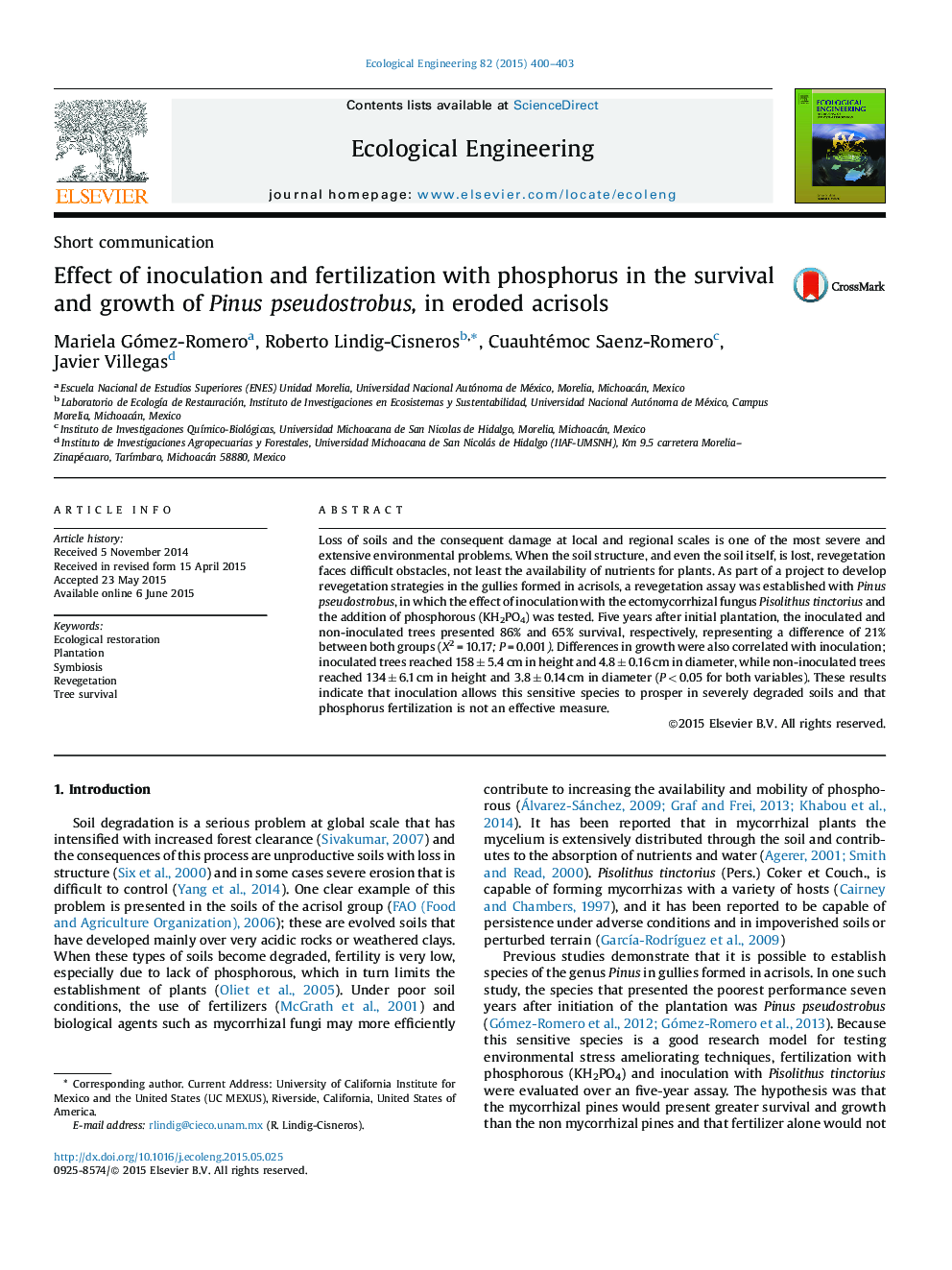| Article ID | Journal | Published Year | Pages | File Type |
|---|---|---|---|---|
| 4388988 | Ecological Engineering | 2015 | 4 Pages |
Loss of soils and the consequent damage at local and regional scales is one of the most severe and extensive environmental problems. When the soil structure, and even the soil itself, is lost, revegetation faces difficult obstacles, not least the availability of nutrients for plants. As part of a project to develop revegetation strategies in the gullies formed in acrisols, a revegetation assay was established with Pinus pseudostrobus, in which the effect of inoculation with the ectomycorrhizal fungus Pisolithus tinctorius and the addition of phosphorous (KH2PO4) was tested. Five years after initial plantation, the inoculated and non-inoculated trees presented 86% and 65% survival, respectively, representing a difference of 21% between both groups (X2 = 10.17; P = 0.001). Differences in growth were also correlated with inoculation; inoculated trees reached 158 ± 5.4 cm in height and 4.8 ± 0.16 cm in diameter, while non-inoculated trees reached 134 ± 6.1 cm in height and 3.8 ± 0.14 cm in diameter (P < 0.05 for both variables). These results indicate that inoculation allows this sensitive species to prosper in severely degraded soils and that phosphorus fertilization is not an effective measure.
